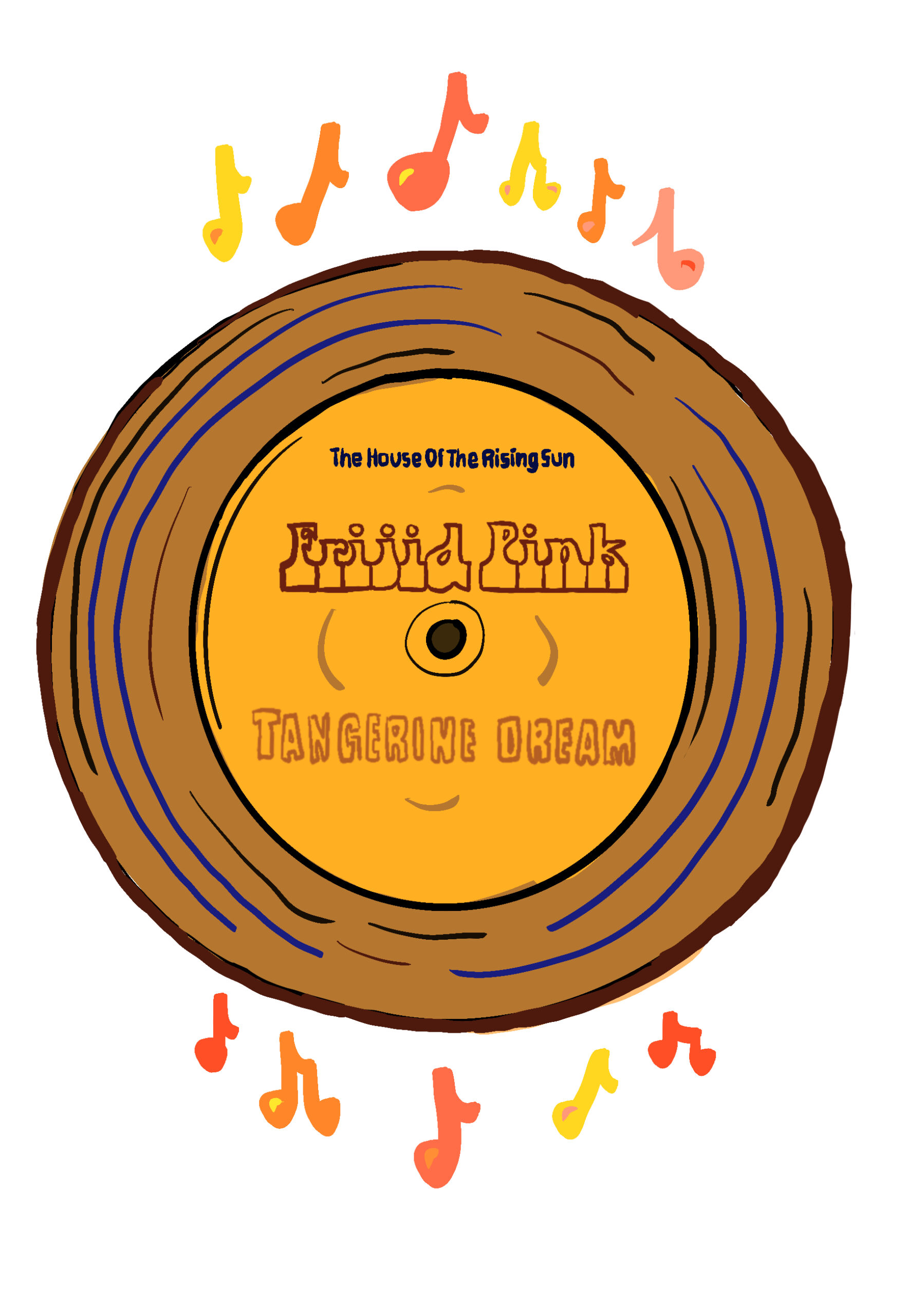House of the Rising Sun: Frijid Pink, 1970 and Tangerine Dream, 1989
November 4, 2022
 Kate Padilla
Kate Padilla
The decades following The Animals’ smash hit brought with them a host of “House of the Rising Sun” reincarnates, the song’s narrative thrust never succumbing to marketplace inertia. By the dawn of the seventies, slipstreams opened for sprawling innovations over a deep-seated tradition. Any reverence for the folkish way of doing things—acoustic, minimalist instrumentation, etc.—was left behind alongside the confines of derivative, blues-based rock and roll. The sixties are commonly touted as the epoch of contemporary social upheaval. The seventies and eighties, suffering under the damp dispirit of unfulfilled idealism paired with a newfound social consciousness, display a distinct indifference towards past musical forms. Technological innovation was made to be a proxy for continued social progress. Sober and searching, a new generation of musicians pushed themselves towards curiosities about the potentials of unmarked, untethered soundscapes.
Of course, “House of the Rising Sun” persisted, but blues-based musicianship waned. A texture much more akin to warbling than rocking made an appropriate home for a people adrift—theirs was a creative tradition in desperate search of identity after losing the anchoring that 1960s counterculture provided. The tendency to get lost rather than lock-in was established.
Motor city hard-rockers Frijid Pink ushered in the new decade with their 1970 cut of “House of the Rising Sun.” This take features fuzz-laden electric guitar and psychedelic synth warping the, yet again, revised narrative. We seem to be asking ourselves: “how far can we get from Clarence Ashley?”—and oh, we have strayed far from his bucolic jaunt—while tapping into that same, self-replenishing inkwell of imagination honed by the song’s storyline. The intensity of soaring electric guitar interludes and ever-building percussive lines still pales next to our persisting narrator’s haunting premonitions. Narrative continuity, not instrumental connectedness, informs how we conceive of the metaphysics of the song—its identity as it travels through space and time. “House of the Rising Sun” remains Frijid Pink’s most popular song to date. It is not an instrumental fad that carries a song into oblivion.
Or maybe I’m mistaken. Tangerine Dream’s 1989 recording of “House of the Rising Sun” takes a purely instrumental route, forcing us to reconsider the analytical heavyweight we’ve made the song out to be. Pioneers of krautrock and possibly the most influential electronic group of all time, Tangerine Dream’s instrumental version eschews any narrative development for intricate electronic latticework that delivers much of the same intensity that the track’s lyricism would usually convey. Trading acoustic guitar for modular synthesis, Tangerine Dream lets the song breathe, then billow into lush soundscapes that sounds more like “Appalachian Grove” (pioneer of electronic music Laurie Spiegel’s magnum opus) than the Appalachian groves our tune first roamed. The Animal’s arpeggiated chords are dotted across a synth-scape, later unfurling into a fuzzy passageway marked by thundering drums and a descending melodic line that feels so far from New Orleans. A horn section tightens the track up and ghost notes of the bygone tune float back into the composition. For Tangerine Dream to wordlessly harness that same universality that bears “House of the Rising Sun” its eminence, this chord progression seemed to have gained some semiotic significance, the harrowing tale implicit to its simple tonal pattern.
Tangerine Dream’s successful use of the progression is concrete evidence that by 1989, “House of the Rising Sun,” in its infinite forms, was cemented in pop culture. Insofar as we seek solace and likeness in the media that captures our large-scale cultural attention, this song spoke, speaks, of a tale absolutely becoming of the human condition. We see our reflection in the lyrics; we can recognize our damnation in the faintest of repetition.

Comments
Before submitting a comment, please review our comment policy. Some key points from the policy: